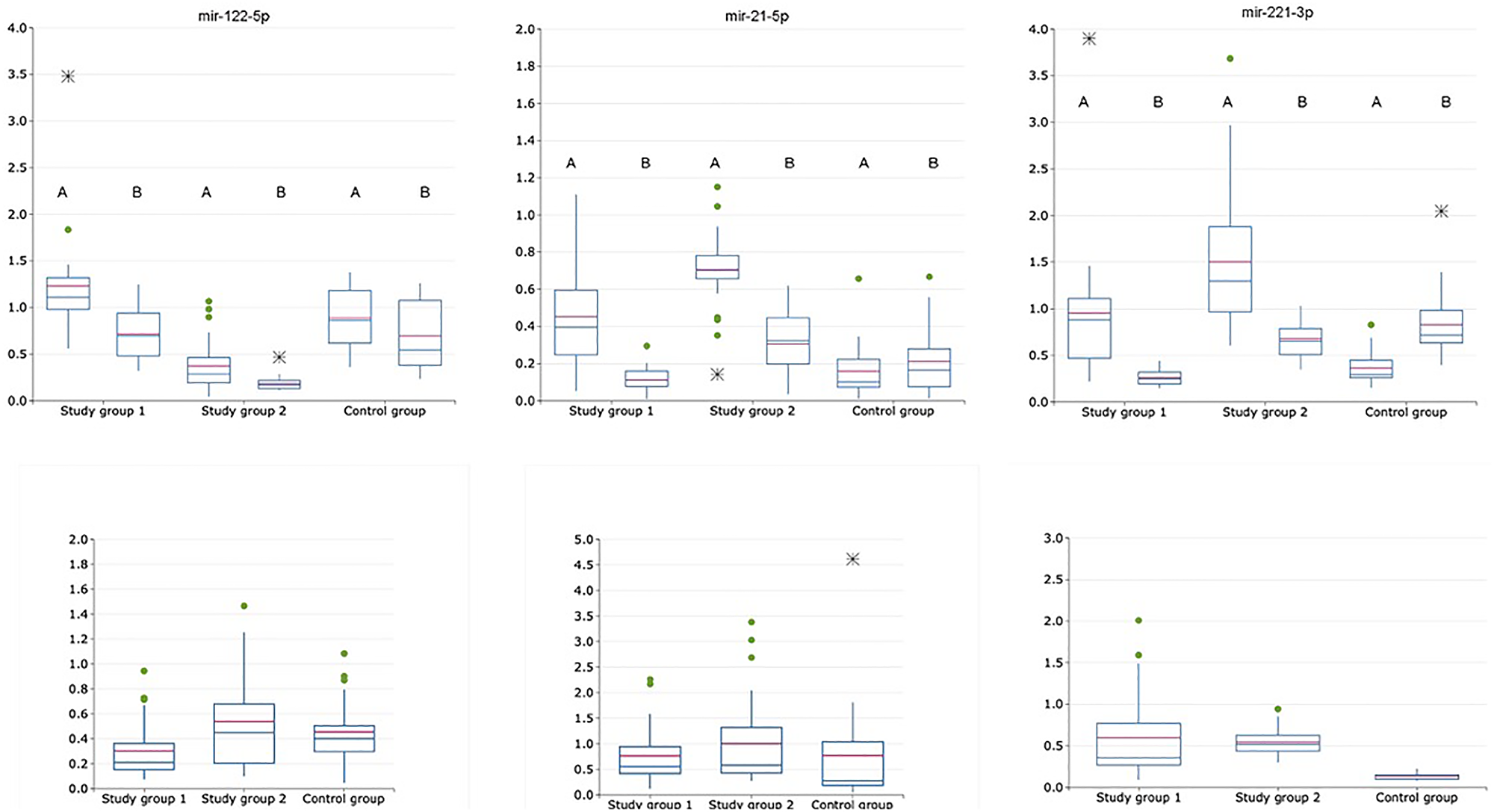Oncotarget published "Exosomal and non-exosomal miRNA expression levels in patients with HCV-related cirrhosis and liver cancer" which reported that patients with HCV-related cirrhosis are at risk for liver cancer development. For these patients miRNAs may serve as preclinical markers, which expression levels are deregulated in cancer and which are stable to the damaging factors partly through complex formation with proteins or packaging into exosomes. The second question was whether saliva miRNA expression levels – both exosomal and non-exosomal – are associated with primary liver cancer.
These authors evaluated exosomal and non-exosomal miRNAs – let-7a-5p, -16-5p, -18a-5p, -21-5p, -22-3p, -34a-5p, -103a-3p, -122-5p, -221-3p, -222-3p – in plasma and saliva of patients with HCV-related liver cirrhosis, primary liver cancer and healthy volunteers.
In this study, non-exosomal miRNAs normalized to non-exosomal miRNA-16-5p showed strong association with liver cancer in plasma. Three miRNAs, those with the mostly pronounced change of expression levels in plasma, – miRNA-21-5p, 122-5p, 221-3p – were detected in saliva.

Figure 3: Relative expression of exosomal and non-exosomal miRNAs normalized to the corresponding miRNA-16-5p (upper raw) and normalized as exosomal to non-exosomal miRNAs ratio (lower raw) in saliva of patients with HCV-related cirrhosis (study group 1, n = 24), liver cancer (study group 2, n = 24) and healthy volunteers (control group, n = 21); A is for exosomal samples; B is for non-exosomal samples.
Dr. Alisa A. Petkevich from The Peoples' Friendship University of Russia said, "Liver cancer despite its relatively low incidence rate with a geographically varied global burden is a fatal disease due to its high mortality rate: 5-year survival rate changes from 2% to 33% depending on the stage of the disease at the time of the diagnosis."
Liver cancer despite its relatively low incidence rate with a geographically varied global burden is a fatal disease due to its high mortality rate: 5-year survival rate changes from 2% to 33% depending on the stage of the disease at the time of the diagnosis.
Hepatocellular carcinoma is the most common type of primary liver cancer reaching 80–90% of all primary liver cancers. In 20% of all cases, this is an out of the blue disease developing without any liver cirrhosis. Anyway, despite the relative low incidence rate of malignancy of an HCV-related cirrhosis and the era of direct antivirals, there is an accumulated pool of patients with HCV-related liver cirrhosis who are at risk group of liver cancer development. Surely, in these cases liver cancer is not that much an out of the blue disease but anyway it may be clinically silent during early stages of the disease, thus, methods for identifying molecular changes developing in preclinical stages of the disease are essential.
The microvesicles may contain different proteins, DNA and various RNA including miRNA, a small non-coding nucleic acid of 18-24 nucleotides involved in epigenetic regulation of the gene expression. Exosomes along with other microvesicles may serve as a target delivery system and mechanism for preserving the structure of the molecules being their defense from different enzymes.
The Petkevich Research Team concluded in their Oncotarget Research Output, "remembering the primary liver cancer has a strong dependance on geography, its incidence rate is relatively low in Russian Federation [3]. This relative low incidence rate along with other factors including unwillingness of patients of the risk group to come systematically to the research center for blood collection without personal interests make the prospective cases database formation an issue in the Russian Federation. Considering the fact, the Liver Research Center of the RUDN Medical Institute has a database of patients with HCV-associated cirrhosis with the contact information, a possible solution to this problem could be the use of a biomaterial that does not require the presence of medical personnel for its collection, for example, such as a saliva. In our research, we proved saliva was a promising approach as a source for exosomal and non-exosomal miRNAs. The exosomal miRNAs normalized to exosomal miRNA-16-5p seem to be the form of miRNA normalization, which give the strongest association with primary liver cancer in saliva samples."
Sign up for free Altmetric alerts about this article
DOI - https://doi.org/10.18632/oncotarget.28036
Full text - https://www.oncotarget.com/article/28036/text/
Correspondence to - Alisa A. Petkevich - [email protected]
Keywords - microvesicles, miRNA, cirrhosis, liver cancer, saliva
About Oncotarget
Oncotarget is a biweekly, peer-reviewed, open access biomedical journal covering research on all aspects of oncology.
To learn more about Oncotarget, please visit https://www.oncotarget.com or connect with:
SoundCloud - https://soundcloud.com/oncotarget
Facebook - https://www.facebook.com/Oncotarget/
Twitter - https://twitter.com/oncotarget
LinkedIn - https://www.linkedin.com/company/oncotarget
Pinterest - https://www.pinterest.com/oncotarget/
Reddit - https://www.reddit.com/user/Oncotarget/
Oncotarget is published by Impact Journals, LLC please visit https://www.ImpactJournals.com or connect with @ImpactJrnls
Media Contact
[email protected]
18009220957x105



